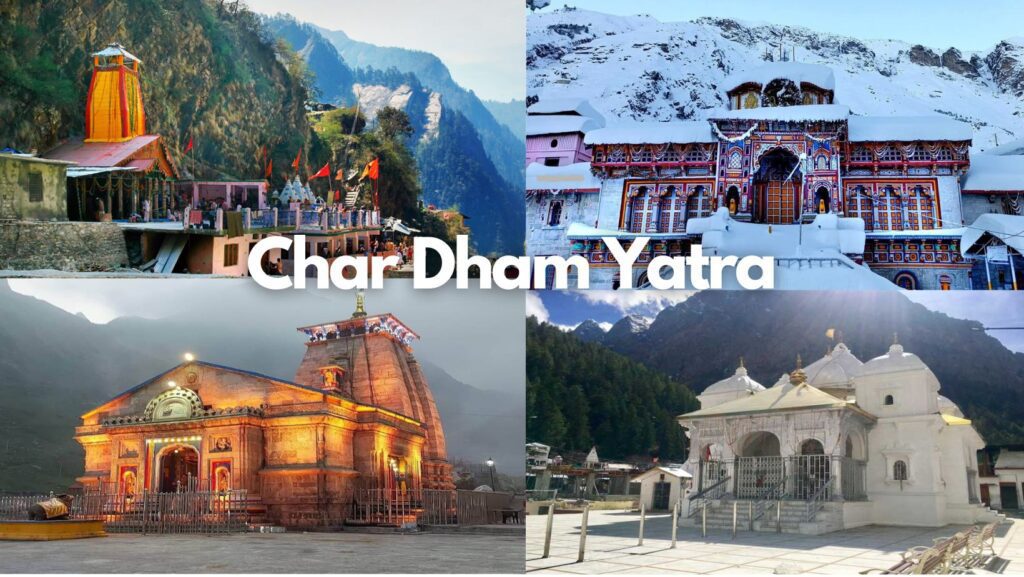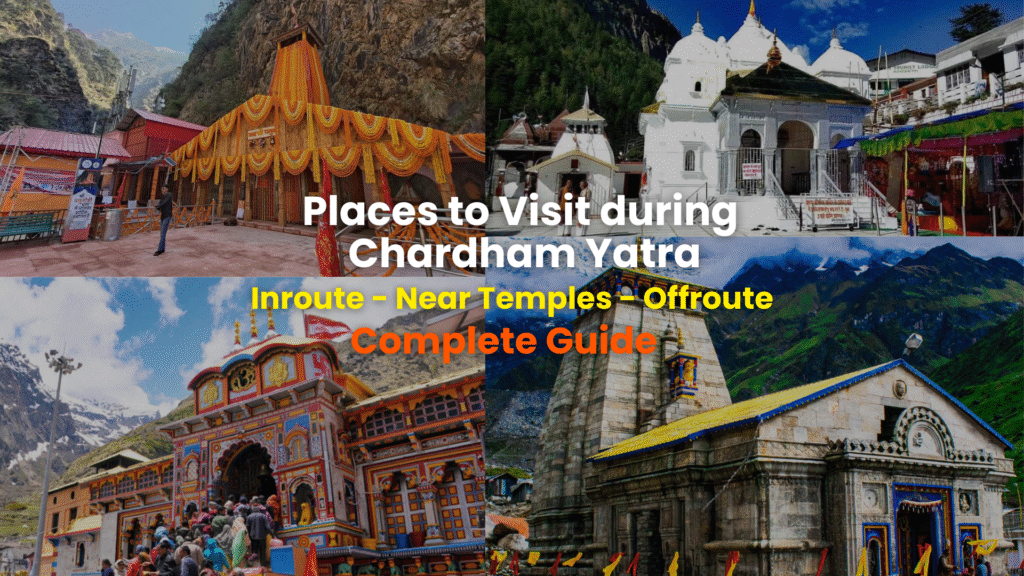Table of Contents
History Of Chardham Yatra
The CharDham Yatra is one of the most prestigious Hindu pilgrimages in India, encompassing four holy sites 4 Dham of India names / 4 धाम के नाम: Kedarnath, Badrinath, Gangotri and Yamunotri. These pilgrimage sites were founded by the great Hindu philosopher Adi Shankaracharya, who sought to unite the diverse Hindu population by creating a common pilgrimage circuit. The 4 Dham in India seen as a path to moksha, or liberation from the cycle of birth and rebirth, and is of great significance to Hindus globally.
Adi Shankaracharya was an 8th century Vedic scholar and philosopher who founded the Advaita Vedanta philosophy. His teachings focus on the immutable nature of the self (Atman) and Brahman, with other entities lacking absolute existence. Born in Kerala, he was attracted to a life of renunciation from an early age and is celebrated for his philosophical contributions and his efforts to revive Vedic studies and unify Hinduism through the establishment of monasteries and pilgrimages.
Historical context: Before the 1950s, pilgrims traveled to these holy sites on foot, often including wandering monks and people with the means to travel extensively. After the India-China War of 1962, India improved connectivity and infrastructure, making the 4 Dham in India more accessible to people from diverse economic and social backgrounds. The pilgrimage has since become a transformative experience for a wide range of devotees.
The Char Dham Yatra is a spiritually enriching journey, rooted in the teachings of Adi Shankaracharya, which aims to unite Hindus and provide a path to spiritual liberation.
Mythological Description of char dham of india pilgrimage sites
Yamunotri – The Abode of the Goddess
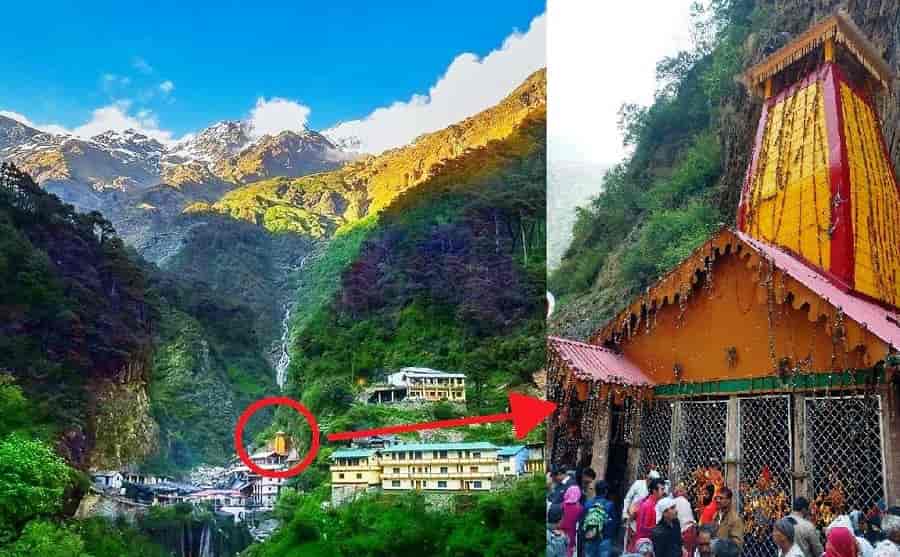
Yamunotri: The first stop on the traditional Char Dham route is Yamunotri Dham, which marks the source of the Yamuna River near the Bandarpoonch mountain. According to ancient legend, sage Asit Muni used to bathe in both the holy rivers, Yamuna and Ganga, every day. When he grew old and could not reach both the rivers, as a proof of his devotion, miraculously a small stream of Yamuna river appeared next to the Ganga river. It believed that taking a holy dip in the river Yamuna saves a person from the realm of Yama Loka.
Story of Goddess Yamuna: Yamunotri temple worships Goddess Yamuna, who considered to be the daughter of Sun God. In Hindu mythology, it believed that Yamuna descended from heaven to free humanity from its sins.
Yamunotri Temple: Pilgrims have to undertake a challenging journey to reach Yamunotri Temple, where the sacred black marble idol of Goddess Yamuna is located.
Gangotri – The Origin of the Holy Ganges
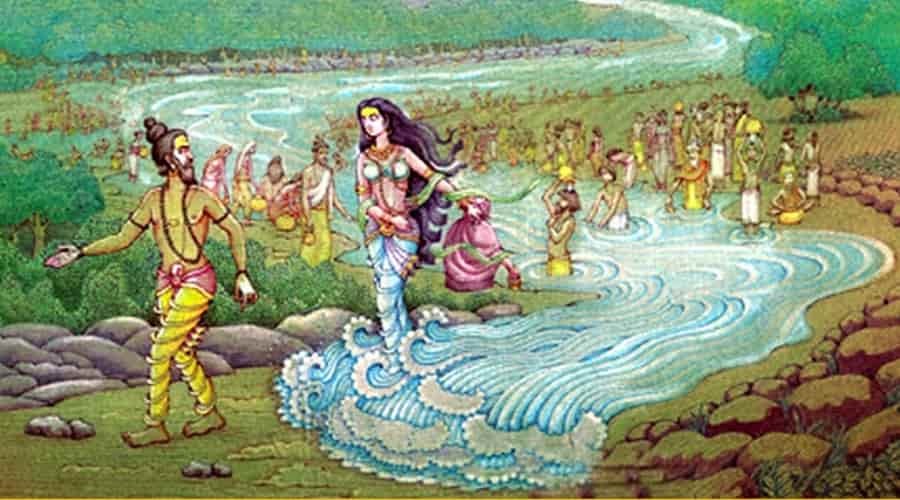
Gangotri: The story of Gangotri dates back to the time when the river Ganga resided in heaven and did not flow on earth. King Bhagirathi performed intense penance in the Gangotri region to please Goddess Ganga, and requested her to descend to the mortal world and purify the remains of his ancestors and grant them salvation. Seeing his deep meditation, Goddess Ganga decided to descend on the earth flowing through the locks of Lord Shiva’s hair.
Penance of King Bhagiratha: The legend of Gangotri Tirtha involves King Bhagiratha, who performed penance for centuries to bring the river Ganga to earth. It believed that Goddess Ganga agreed to descend to earth in response to his intense penance.
Gangotri Temple: Built by a Gorkha commander in the 18th century, Gangotri Temple stands as an important religious site in the beautiful Bhagirathi Valley.
Kedarnath – The Abode of Lord Shiva
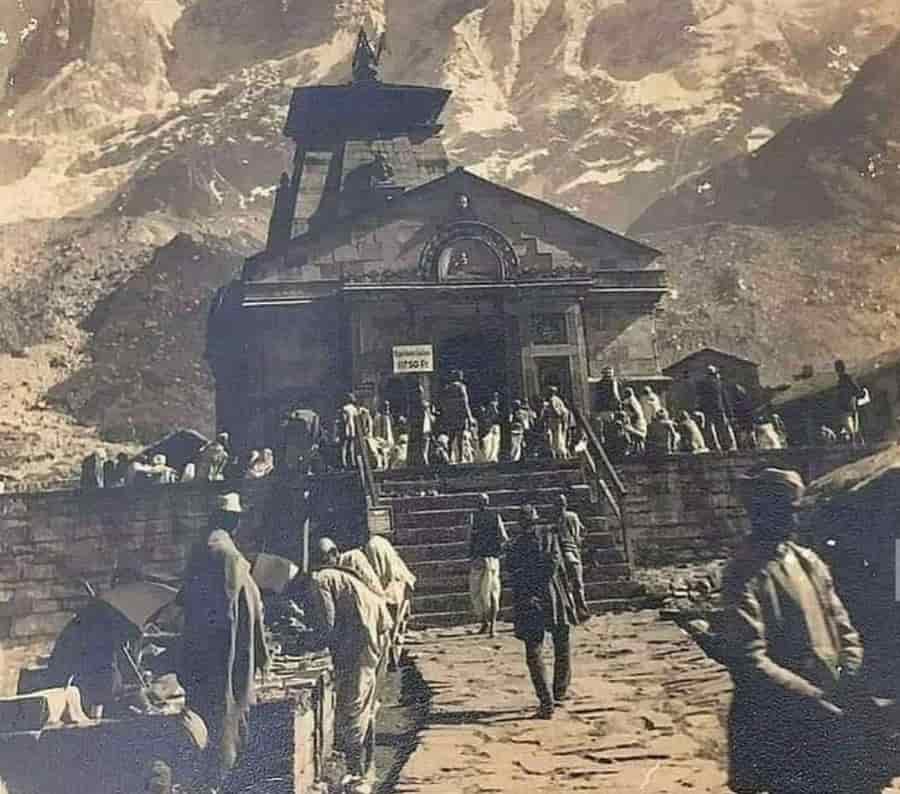
Kedarnath: The story of Kedarnath associated with the Pandava brothers, who went to Kedarnath to seek forgiveness from Lord Shiva for getting involved in a war with their cousins, the Kauravas. He set up a small temple and performed rituals to please Lord Shiva and sought his forgiveness.
Abode of Lord Shiva: Kedarnath one of the twelve Jyotirlingas, and believed to be the place where Lord Shiva took refuge in the form of a bull to escape from the Pandavas after the Kurukshetra war.
Kedarnath Temple: The ancient stone structure of Kedarnath Temple situated at an altitude of 3,583 meters and is accessible only during the summer months due to heavy snowfall in winter.
Badrinath – The Holy Residence of Lord Vishnu
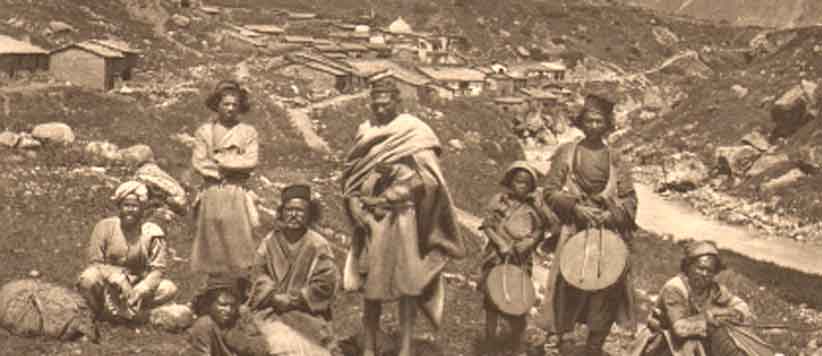
Badrinath: The legend of Badrinath revolves around the twin sages, Nara and Narayana, for whom the mountain range behind the temple is named. These sages performed rigorous penance in Badrinath area to please Lord Vishnu. Impressed by his devotion, Lord Vishnu appeared before him.
Meditation on Lord Vishnu: Badrinath associated with meditation on Lord Vishnu in the form of Lord Badrinarayan. Legend has it that Adi Shankaracharya found the idol of Lord Badrinarayan in the Alaknanda River and established the temple.
Badrinath Temple: The Badrinath Temple is a remarkable example of Hindu temple architecture, adorned with intricate carvings, and is located near the Neelkanth peak. These myths enrich the spiritual and historical significance of the Char Dham Yatra, which attracts countless pilgrims and devotees to its holy sites every year.
Lesser-Known Facts about the char dham of india
- Original location of Badrinath Dham: Surprisingly, the original temple of Badrinath Dham is not located at its present temple location but within the mysterious Garuda caves near the holy city of Badrinath. This lesser known fact adds a layer of intrigue to the history of the pilgrimage site.
- Mysterious Submerged Shivalinga: A unique and mysterious submerged Shivalinga is present under the water around Gangotri Dham. This remarkable Shivalinga is visible only during the winter months when the water level drops beyond a certain point, revealing the submerged icon, adding an element of mystery and wonder to the pilgrimage.
- Mahasamadhi of Adi Shankaracharya at Kedarnath: The visionary founder of the Char Dham temples, Adi Shankaracharya attained Mahasamadhi, the state of ultimate meditation and liberation, at the Kedarnath temple. This holy event enhances the spiritual importance of Kedarnath in the Char Dham Yatra.
- Silent Shankha in Badrinath: Despite Shankha being the main symbol of Lord Vishnu, blowing of Shankha strictly prohibited in Badrinath. Legend has it that the demon named Vatapi of Badrinath hid himself inside a conch shell to escape from the famous sage Agastya. To this day, conch shells are not blown in this area, as it believed that doing so may liberate the trapped demon Vatapi from his prison. This interesting tradition adds a unique aspect to the rituals of Badrinath.
Importance of char dham in india

Spiritual Purification
Significance of Religious Bath: Pilgrims deeply believe that taking a dip in the holy rivers at Chardham yatra pilgrimage sites is a source of spiritual purification, washing away their sins. The sacred waters of the Yamuna, Ganga and other rivers hold immense significance in Hinduism, providing a deep sense of spiritual cleansing.
Liberation and Salvation
Liberation from Samsara: Completion of the 4 Dham Yatra is considered a means to liberation from the eternal cycle of birth and death, called samsara. Attaining moksha, or liberation from the cycle of rebirth, is the ultimate goal of this pilgrimage, which promises salvation and eternal spiritual freedom.
Devotion and Dedication
Testing one’s devotion: The challenging terrain and often unpredictable weather conditions during the journey serve as a test of the pilgrims’ devotion and resilience. Enduring these trials believed to deepen a person’s connection with the divine, thereby strengthening his or her commitment to the spiritual journey.
Cultural and Historical heritage
Ancient Temples: 4 Dham temples are not just places of worship; They stand as architectural wonders with a rich historical heritage. They provide deep insight into the ancient art, culture and traditions of India, and preserve the cultural and historical heritage of the country for future generations.
Development of 4 dham
Ancient Origin
Historical Records: Although the exact historical origins are unclear, references to 4 Dham pilgrimage sites can be found in ancient texts such as the Puranas and the Mahabharata, highlighting their antiquity and spiritual significance.
Infrastructure Development
British Influence: The development of modern infrastructure for 4 Dham Yatra began during the British colonial rule in India. Efforts were made to build roads and increase access to these sacred sites, which were early steps towards modernization.
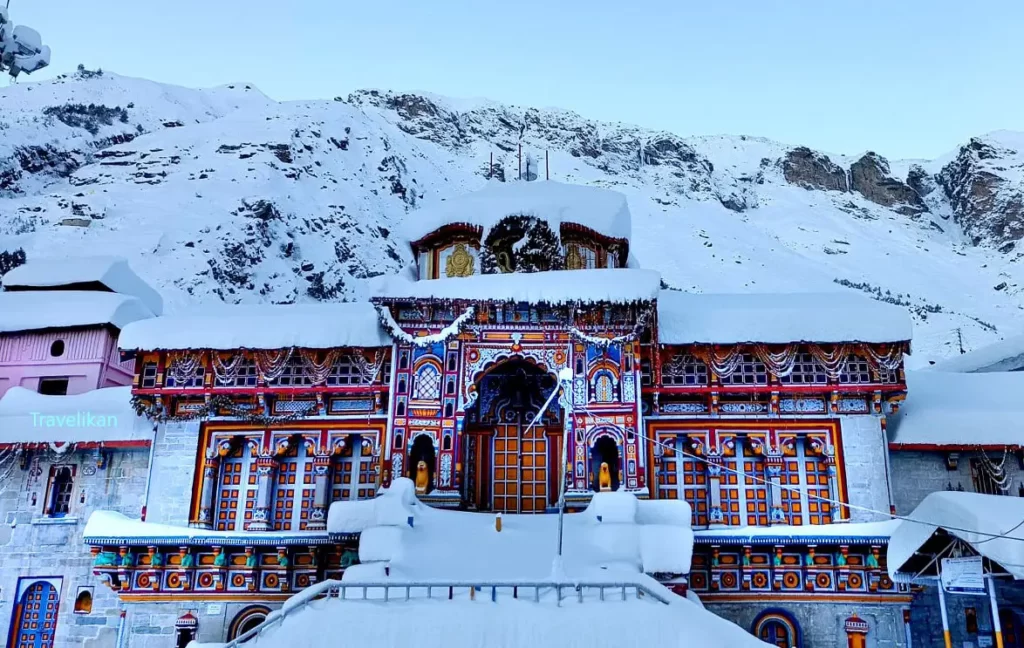

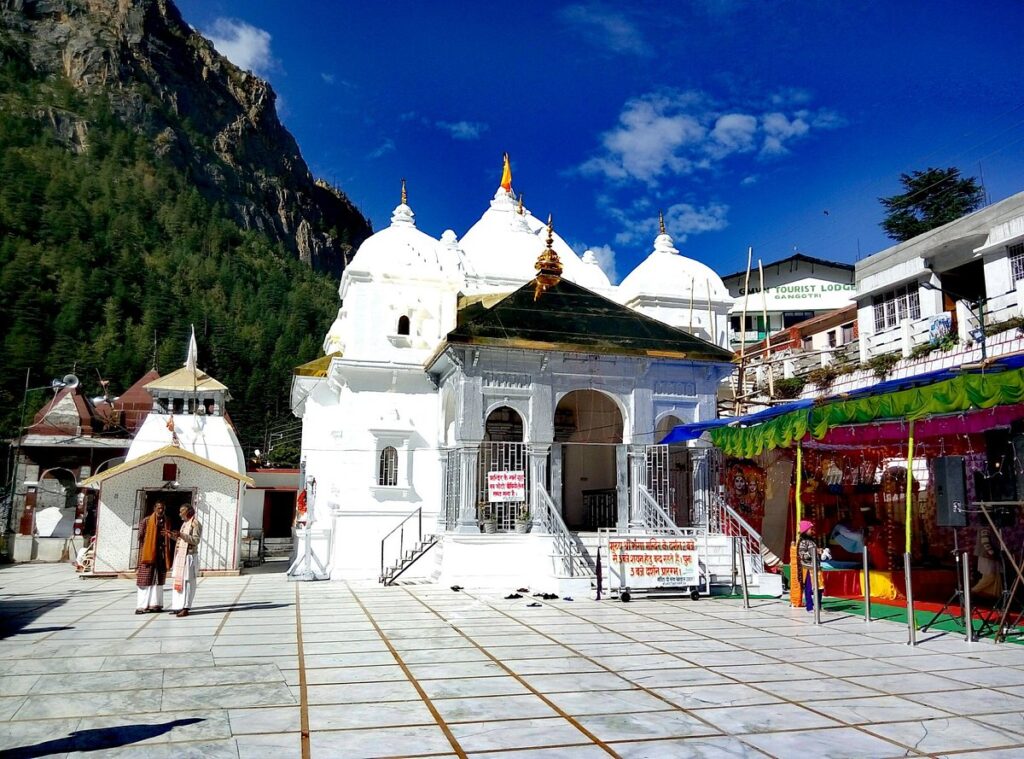
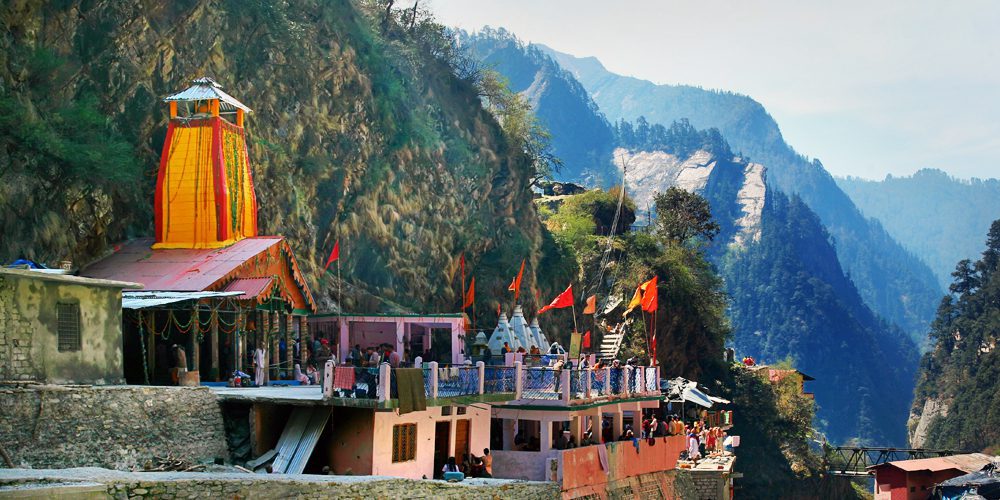
Modern Accessibility
Improved Roads and Transport: In recent decades, the Government of India has made substantial investments in improving road connectivity, transport services and accommodation along the Chardham Yatra route. Additionally, the introduction of helicopter services has made the pilgrimage more accessible to a wider spectrum of pilgrims.
Tourism and Economy
Boom in Tourism: 4 Dham Yatra has evolved as an important driver of the local economy in Uttarakhand. It attracts not only pilgrims but also tourists wishing to explore the natural beauty and cultural heritage of the area, which contributes to the economic growth of the area.
Environmental Concerns
Eco-friendly initiatives: The increase in tourism has raised concerns about environmental degradation in the delicate Himalayan ecosystem. To address these issues, there is a growing emphasis on promoting eco-friendly practices and sustainable tourism in the region, thereby ensuring the preservation of this pristine natural environment for future generations.
Rituals and practices
Yamunotri
Rituals: Pilgrims offer prayers at Yamunotri, take a holy bath in the Yamuna River, and prepare rice and potatoes as offerings to the Lord in the natural hot springs.
Gangotri
Rituals: Devotees visiting Gangotri take a dip in the holy waters of Ganga and offer prayers at the Gangotri temple. Many people carry Ganga water as a symbol of spiritual purification.
Kedarnath
Rituals: Pilgrims undertake a padyatra to reach Kedarnath temple to seek blessings from Lord Shiva. They actively participate in Aarti and various religious ceremonies, which deepens their spiritual connection.
Badrinath
Rituals: The conclusion of the yatra includes a visit to the Badrinath temple, a holy dip in the Tapt Kund and participation in the evening aarti, which enhances the spiritual experience.
Frequently Asked Questions
Ans. It believed that visiting these sites paves the way to attain moksha or salvation. According to Hindu tradition, the Char Dhams are Badrinath, Dwarka, Jagannath and Rameshwaram. It is a deep belief that every Hindu should visit the Char Dham at least once in his lifetime. As defined by Adi Shankaracharya (686–717 BCE), Char Dham consists of four sacred Hindu pilgrimage sites.
Ans. Yamunotri Dham
The pilgrimage commences at Yamunotri, then progresses to Gangotri, Kedarnath, and culminates at Badrinath. Travelers have the option to undertake the journey by road or by air, with helicopter services available for added convenience. Book with Mahaluxmi Travels.
Ans. In line with this, we are planning to reopen the ancient Char Dham route, which is about 3,000 years old and was traveled by the Pandavas. In the eighth century, Adi Shankaracharya named this route “Chota Char Dham”. Those who wish to embark on this journey can opt for one of two travel combinations.
Ans. Traditionally, it considered an auspicious practice to travel from west to east in the order of Yamunotri, Gangotri, Kedarnath and finally Badrinath. Nevertheless, due to the connectivity of these four places with major cities, travelers have the convenience of starting their journey from any of the holy sites.
Ans. Chardham Yatra has evolved with the development of modern infrastructure and accessibility. It now contributes significantly to the local economy. However, challenges include environmental concerns, ecological balance and the delicate task of balancing modern amenities with maintaining the sanctity of these pilgrimage sites.
Ans. It is believed that completing the Chardham Yatra leads to spiritual growth and liberation from the cycle of rebirth. Pilgrims undertake this journey to deepen their connection with the divine and seek moksha, or salvation.
Ans. Pilgrims may face challenges related to rugged terrain, high altitude and unpredictable weather conditions. Adequate preparation, good health and medical advice are essential to ensure a safe and successful pilgrimage.
Ans. You Can Book your Char dham Yatra from Haridwar, or Rishikesh by Mahaluxmi Travels. Mahaluxmi Travels Arrange all for you from Hotel to Stay, to Restaurants, to Beautiful Sightseeing. Call:- (+919411546001,+919359078777)

